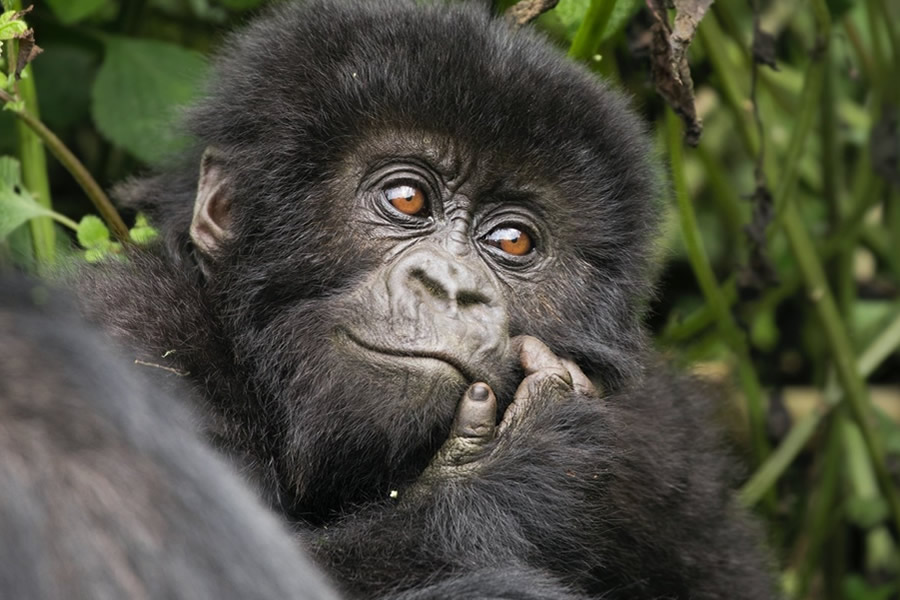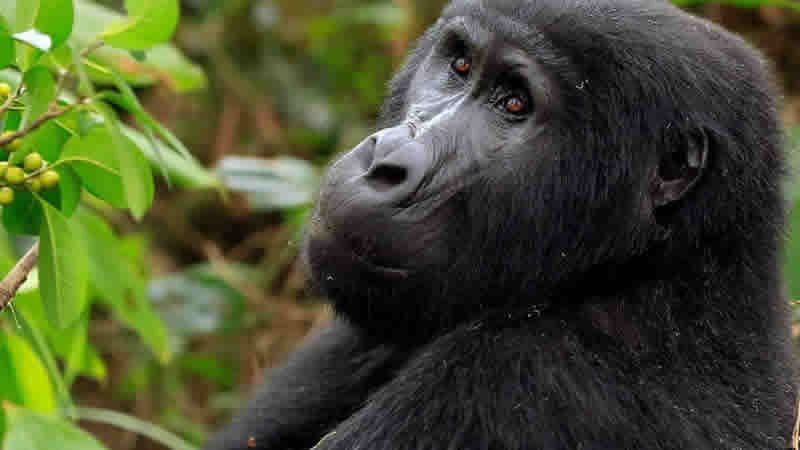Top Things to do Around Queen Elizabeth National Park
Top Things to do Around Queen Elizabeth National Park , Queen Elizabeth is situated in the western region of Uganda and is a jewel for diversity and wildlife in Uganda and has long been renowned for being one of the greatest destinations to Visitors in Uganda. It attracts many visitors from the globe. Spanning over 1,978 square kilometers, is home to a complex ecosystem comprising savannah, wetlands, and forests. There are various things to do as you explore the treasurers in the great Queen Elizabeth National Park; these include Game drives, boat safaris, cultural experiences, mountaineering, and birdwatching. There are also park’s conservation effects and the role of influential figures in promoting eco-tourism, enhancing our understanding of the park’s significance.

Game drives
Number one activity in most of the parks in Uganda is the prior activity for one to do in Queen Elizabeth. It stands as a thrilling way to observe its wildlife, these are elephants, lions, buffalos and leopards. The park features well-maintained roads and qualified guides that provide in-dept knowledge about the wildlife and the park’s ecosystem. Game drives are best conducted in the early morning or in the late afternoon giving that the animals are most active. Along with these excursions, visitors can also appreciate the breathtaking landscape punctuated by the rift valley and awing crater lakes. In the midst of these game drives are enthralling moments Where you get the opportunity to view the exclusive tree climbing lions of Ishasha section and this is a main highlight for most of the tourists. As guests venture the park, they witness the delicate balance of nature and the importance of conservation, fostering a greater appreciation for wildlife and eco-system preservation.
Boat safaris
Speaking of boat safaris in a national park screams a water body in the park. Queen Elizabeth is featured with Kazinga Channel which offers a unique perspective on aquatic life and bird species. This natural channel connects Lake Edward and Lake George, thus a rich habitat for hippos, crocodiles and various bird species. A boat safari provides the visitors the opportunity to observe there animals up close while enjoying the scenic tranquility of the waterway. The channel is also a birdwatcher’s paradise, as it hosts over 600 bird species, including the rare shoebill stork and the African fish eagle. The abundance of wildlife along the shores helps to underscore the importance of protecting and preserving such unique and diverse eco-systems. This serene experience can be both exhilarating and educational, reinforcing the need to maintain natural habitats for the future generations.
Cultural Experiences
This is another vital aspect not to be missed when you travel to Queen Elizabeth National Park. The surrounding communities are the key highlights to enhance this cultural experience where you engage with local cultures, tastes and traditional villages and enable guests to learn about the Bakonzo, Bahima people, their customs and ways of life. Cultural performances, including traditional dances and songs, offer a vibrant insight into the local heritage. Such Interactions foster understanding and appreciation between tourists and local communities, highlighting the importance of cultural conservation alongside environmental efforts. This engagement helps in promoting sustainable tourism practices, ensuring communities benefit from the natural resources surrounding them.
Baboon Cliff Drive
This is a must-visit attraction of any nature enthusiast in queen Elizabeth National Park. This scenic drive offers breathtaking views of the surrounding landscape including the Rwenzori Mountains and vast Savannah below. The drive is aptly names for the large number of numbers of baboons that can be seen along the cliffs, providing visitors with unique opportunity to observe these fantastic primates in their natural habitat. Besides the abundant wildlife and stunning scenery, the baboon cliff drive also offers caption of the diverse animals including lions, elephants, hippos, all of which have benefited from the conservation of the park. The visitors also Contributed preservation of this park and its animals
Bird watching
For the bird lovers and casual observers, the park is an enthusiast for another exciting adventure with various bird species over 600 species. In other words, can the bird lovers say that Queen Elizabeth is heaven. Various habitats create niches for different bird species, including wetlands, forests and knowledgeable savannahs. Guided birdwatching walks can be arranged, and knowledgeable guides help visitors spit and identify birds. This activity encourages conservation awareness as it highlights the intrinsic value of maintaining natural habitats of avian populations and the health of the ecosystem. This activity can help visitors to exercise as the lookout for the birds.
For the adventurous visitors, the opportunity to climb the scenic hills around Queen Elizabeth National Park adds a captivating dimension to their experience. The Rwenzori mountains, often referred to as the “Mountains of the Moon” are located close to the park. Hiking and trekking expeditions are available for those looking for a more strenuous challenge. The diverse flora and fauna found in the mountains offer a breathtaking and awing contrast to the Savannah and wetlands of the national park. Comparing these landscapes raises awareness about biodiversity and encourages visitors to think about conservation in a multidimensional way. The ascent is not only physically rewarding but serves as a reminder of the beauty found in Uganda’s diverse environments.
Night Game drives and costs
Night game drives in Queen Elizabeth National Park offer a unique and thrilling experience that sets this Ugandan destination apart from others. This activity allows visitors to witness the park’s wildlife in a different light, literally. As dusk descends, many animals that are typically elusive during the day become more active, providing an extraordinary opportunity for wildlife enthusiasts and photographers to view creatures such as lions, leopards, and nocturnal animals like bush babies and hyenas. However, understanding the costs associated with these night drives is crucial for those considering this adventure.
Several factors contribute to the costs of night game drives. Firstly, the pricing is influenced by the type of vehicle used. Luxury safari vehicles equipped with comfortable seating, open roofs, and professional guides may come at a higher price. Typically, a night game drive can range anywhere from $30 to $100 per person, depending on the level of service and comfort offered. It is essential for visitors to choose a package that suits their budget while still ensuring an enriching experience.
Another cost to consider is the entrance fee to Queen Elizabeth National Park. As of recent years, the fee for non-Ugandan citizens is approximately $40 per person per day. This fee maintains the park’s infrastructure and supports conservation efforts. Additionally, some tours also require a fee for the night drive itself, which can add to the overall expense. It is advisable for travelers to check current rates, as they may fluctuate due to inflation or changes in policy.
Queen Elizabeth has been exceptionally fortunate to have influential figures who have championed conservation and eco-tourism in the area. The efforts of organizations such as the Uganda Wildlife Authority and various non-governmental organizations have been crucial and vital in protecting the park and promoting sustainable tourism practices. These initiatives not only advocate for wildlife protection but also address socio-economic challenges faced by surrounding communities. The collaboration between conservationists, local populations, and tourists has created a sustainable model that supports both wildlife and human existence.
In recent years, the rise of eco-tourism has helped to bolster the park’s reputation as a premier destination for nature lovers. This tourism model emphasizes responsible travel practices that minimize the environmental impact while benefiting local communities. Educational programs and conservation initiatives aim to engage visitors in understanding the significance of biodiversity and ecological balance. Equipped with this awareness, tourists often return home as advocates for wildlife preservation and sustainable practices within their communities.
Looking towards the future, Queen Elizabeth National Park faces threats such as climate change, poaching, and human-wildlife conflict. Continued efforts for protection and sustainable tourism are vital to the park’s longevity. Investing in community education programs and wildlife protection measures will ensure that future generations can enjoy the rich experiences that the park has to offer.
In conclusion, Queen Elizabeth National Park is a multifaceted destination offering a plethora of activities that range from exhilarating game drives to serene boat safaris, local cultural engagements, adventurous climbing, and insightful birdwatching. The park stands as a testament to the importance of conservation and sustainable tourism practices. Through the collaborative effort of influential individuals and organizations, the significance of this national treasure is respected and preserved for the enjoyment of future visitors and the protection of its diverse ecosystems.



